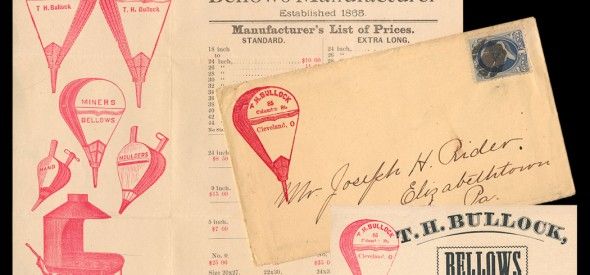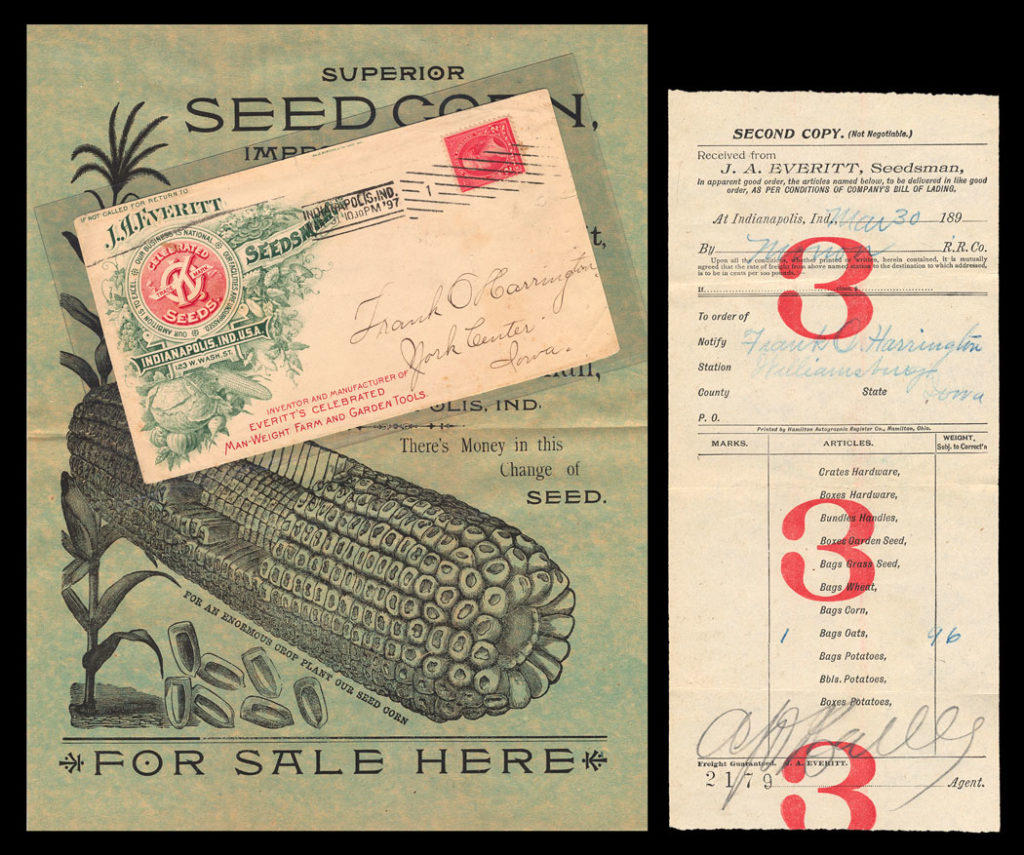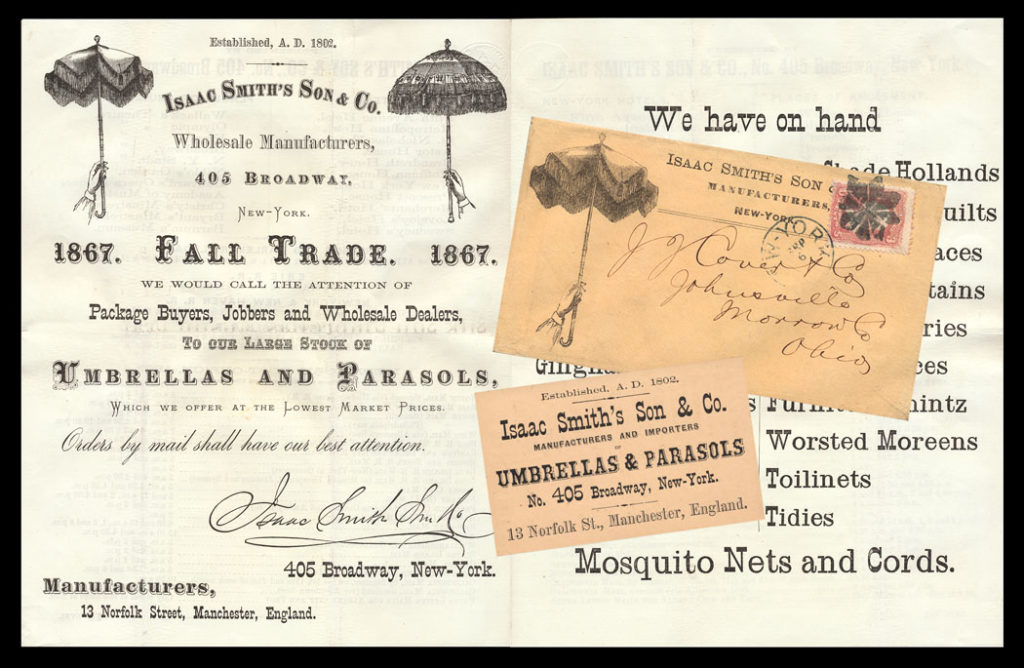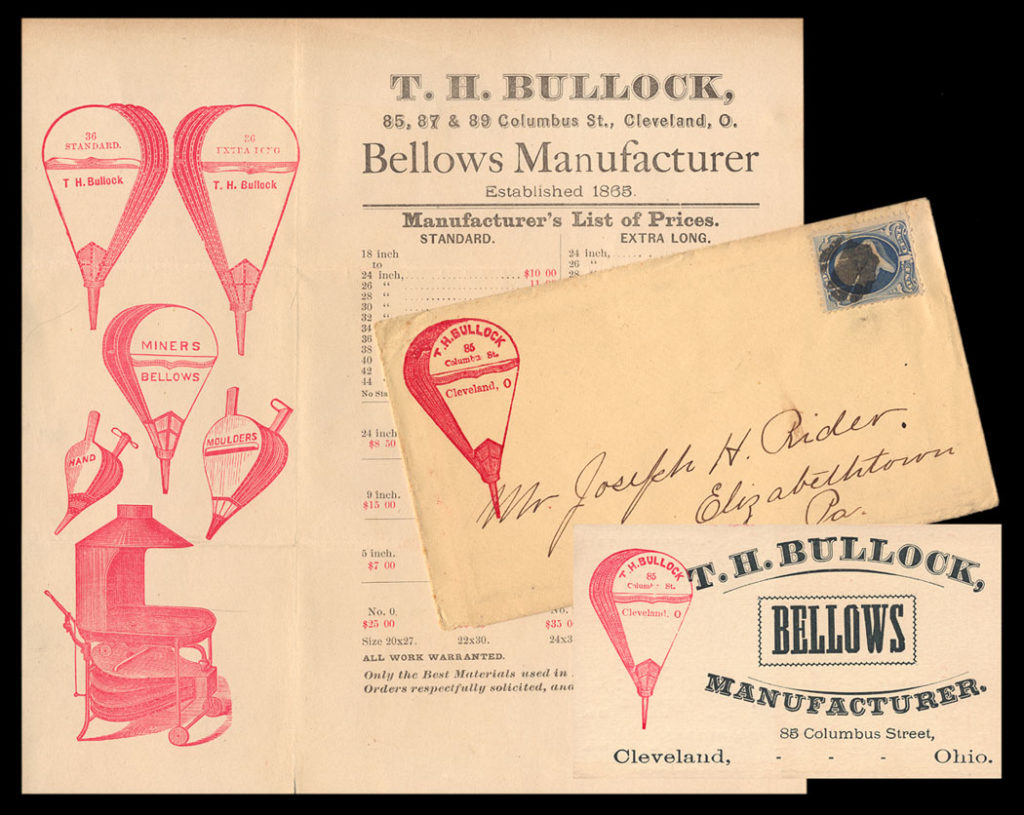Of Paper Americana and Philaphemerists

I have come to look at many collecting areas as parts of a cohesive whole, rather than a list of separate specialties such as stamps, covers, trade cards, letterheads, cancellations, postal history, greeting cards, revenues on a document, etc. It is, in reality, a universe of intersecting interests. Take one example . . .

First there is the stamp, a 2¢ small Banknote (which Scott number is it, is it a color or printing variety, how well-centered are the perfs?); then there is the 1897 Indianapolis machine cancellation to evaluate; then consideration of the 2-color advertising cover (with a red ink chosen to match the first-class stamp) for “Seedsman” J. A. Everitt (“Inventor and Manufacturer of Everitt’s Celebrated Man-Weight Farm and Garden Tools”) . . . several topics and possible questions there; then there is an enclosed seed corn flier, which is made to function as a store sign, so the addressee is presumably a dealer; then there is a large wood engraving for those interested in printing technologies; then there is the graphic receipt copy (for a bag of oats), with much information about Everitt’s business and products. In many similar situations there may also be a trade card enclosed. All of these elements are part of one whole, and it makes a great deal more sense to consider them all together, rather than a stamp or cover collector folding away or selling off the other items as unwanted (or even worse, in times gone by, a stamp collector cutting off the stamp and tossing everything else!).
Another example, with a wealth of detailed information on several levels (and yet more on the reverse of the trade card and the flier) . . .

And one other example . . .

All of these things are part and parcel of the same subject. There is no earthly reason for philatelists to ignore enclosed letterheads, or for trade card collectors to ignore related postcards, or for carte de visite collectors to be disinterested in cancellations on applied revenue stamps. Exploring more aspects—all aspects—of a paper object opens up new collecting and research possibilities, enables more enjoyment to be had. Perhaps it is time to resurrect the now passé term “Paper Americana” to embrace all the intersecting, intimately related aspects of ephemera on paper, including stamps and postal history. Though we each, of course, have our own particular favorite interests, it seems to me there is no good reason to have a stamp show camp over here, a paper show camp over there, a postcard camp over there, etc.
And if an envelope with a stamp and a letterhead and a flier and a trade card are not found conveniently together, then all the better . . . the hunt can begin to track down related items.
For some time now, stamp dealers have recognized that more and more customers are inquiring about whether any ephemera (“collateral”, “go-withs”, call it what they will) might be available, have become aware that paper now often sells as well or better than stamps. Consequently, more and more stamp dealers also stock ephemera these days. Increasingly, postcard dealers represent a growing proportion of the dealers at “stamp” shows. And paper shows. There is a natural, market-driven consolidation of interests going on.
A huge international stamp show hosted in the USA every ten years. The folks who put on Washington2006 seriously considered integrating ephemera dealers into that show. They were unable to quite make that happen but did include a major display of ephemera material. For the upcoming NY2016 World Stamp Show (May 28-June4), there will be a strong Ephemera Society presence and participation. For the next such international show, Boston2026, organizers fully intend to include and integrate paper.
Philaphemerists of the world unite! (A bumper sticker?)
